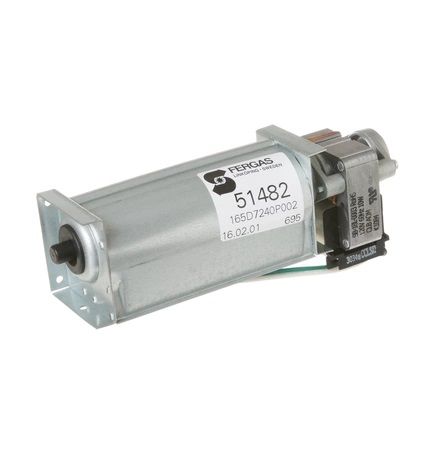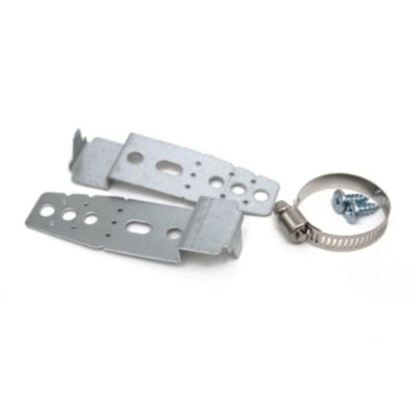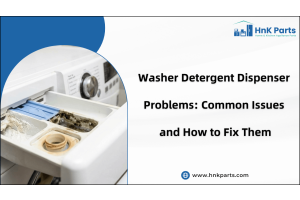
How to Clean a Dishwasher(Quickly!): 9 Easy Steps
A dishwasher is an essential appliance in many households, offering convenience and efficiency in cleaning dishes, utensils, and other kitchenware. Instead of handwashing each item individually, you can simply load them into the dishwasher and let it do the work for you. Using a dishwasher offers several advantages. First, it ensures thorough cleaning and sanitation. Dishwashers use hot water and detergent to clean and remove any stains or food particles, preventing the spread of germs and bacteria.
They typically use less water than hand washing, as they are programmed to spray water precisely and only when needed. Additionally, modern dishwashers often come with energy-saving features that help reduce electricity consumption, making them more environmentally friendly. Furthermore, dishwashers provide convenience and organization. They have different compartments and racks designed to hold various types of dishes and utensils securely. This prevents breakage and allows for efficient loading and unloading. Regular maintenance and cleaning dishwasher helps prevent clogs, improves cleaning performance, and extends the lifespan of the dishwasher.
How Often to Clean Your Dishwasher?
To keep your dishwasher functioning optimally and to ensure clean and hygienic results, it is recommended to clean your dishwasher regularly. You should perform routine cleaning on your dishwasher once a month and Every three to six months, it's a good idea to deep clean your dishwasher. The frequency of cleaning varies based on the usage and keep in mind to refer to the manufacturer’s user manual or guide to know the tips and cleaning and maintenance instructions for your model of washer.
It has several parts that need to be cleaned on a usage basis. Routine cleaning involves removing any food debris, such as large particles or seeds, from the filter, spray arms, and the bottom of the dishwasher. It is important to clean dishwasher filter at least once a month or as recommended by the manufacturer and is advisable to check the spray arms periodically and this can be done every 2-3 months or as needed.
What Materials You'll Need to Clean the Dishwasher?
As said earlier, a dishwasher needs regular cleaning to perform the job perfectly. You have to gather some materials before starting the cleaning process. Here we have mentioned all the materials you’ll need to clean a dishwasher:
- A dishwasher-safe cup or bowl
- Dish soap
- White vinegar
- Baking soda
- Cleaning cloth or sponge
- A toothbrush or small brush
- Dishwasher cleaner (Optional and can be used instead of dish soap)
Know about the 12 most Common Appliance problems and solutions.
How to Clean a Dishwasher?
A clean dishwasher is important to improve its work efficiency and to maintain perfect hygiene in the kitchen.
Here are the 9 quick and easy steps on how to clean a dishwasher:
Step 1: Clear the dishwasher
Remove all the dishes, utensils, and racks from the dishwasher. This will make easy access to the inside of the dishwasher and its parts.
Step 2: Cleaning the filter
Locate the filter of your dishwasher which is usually placed at the bottom of the dishwasher. Most of the filters can be taken out from the dishwasher for the cleaning process as they can accumulate debris or any food particles. Clean the dishwasher filter by rinsing it in water or by soaking it in soapy water for some time. And if you still find any stubborn debris, scrub it by using a toothbrush. Check the instructions provided by the manufacturer on how to remove the filter for added safety.
Step 3: Clean the spray arm
Spray arms are responsible for distributing water during the water cycle. Check the spray arm nozzles for any clogs or blockages. If you are finding any difficulty in cleaning the nozzle, using a toothpick might help you or you can use a small brush.
Step 4: Clean the strainer
The strainer is placed at the bottom of the dishwasher and might be filled with debris and food particles. Clean the strainer neatly and remove all the items that might clog the holes. Use a soft brush or a toothbrush dipped in vinegar to clean the strainer. Scrub the surface gently and cover all the corners of the strainer.
Step 5: Cleaning the washer with a cleaning solution
You can use a dishwasher cleaner that is widely available in the market that is made to clean the washer effectively. The most popular cleaner is the Affresh dishwasher cleaner.
Step 6: Run a cleaning cycle with baking soda / clean dishwasher with baking soda
Clean dishwasher with baking soda now. After the vinegar cycle is finished, take one cup of baking soda and sprinkle it on the floor of the dishwasher. Run a short cycle with hot water and, similar to vinegar, skip the drying cycle here also. Baking soda helps remove stains, odors and acts as a natural cleanser. Keep the door of the washer open for air drying.
Step 7: Wipe down the interior
After the cleaning cycle take a damp soft fabric and wipe the entire interior surfaces and parts of the dishwasher including the edges and the door seals and other common parts or places that can accumulate dust. The residues of any remaining debris can be cleaned completely by wiping.
Step 8: Clean the dishwasher door and gasket
The dishwasher door and gasket need regular cleaning to maintain the proper functioning of the door and seal. The rubber gasket might accumulate dust so to clean this use a damp cloth or soft toothbrush, dip that in the vinegar solution and clean the gasket and door thoroughly. If your gasket is made of different material, check the manufacturer’s guidelines to clean it. You can also use a specific dishwasher cleaner to clean the door and gasket.
Step 9: Clean the exterior
Add mild dish soap to a damp cloth and clean the exterior surfaces of the dishwasher, including the control panel and buttons. Wipe away any stains or grime. Afterward, dry the exterior with a clean cloth. Instead of vinegar, you can also use a specific cleaner that is made for dishwashers to clean the washers effectively.
Follow these steps to clean your dishwasher effectively and easily. They need to be cleaned once a month to obtain the optimum performance of the appliance. Regular maintenance will improve the work efficiency of the appliance and maintain kitchen hygiene.
Know about the Best ways to keep home appliances in good condition.
Is it good to clean dishwasher with vinegar?
Yes, cleaning a dishwasher with vinegar is a commonly recommended and effective method. Vinegar is a natural cleaning agent that helps to remove various residues in the dishwasher, such as grease, odors, and mineral deposits. Vinegar's acidic properties make it useful for breaking down and dissolving built-up residue and limescale, which can affect the performance of your dishwasher. Additionally, vinegar's antimicrobial properties can help eliminate bacteria and inhibit mold growth.
What percentage of vinegar do you use for cleaning?
When using vinegar to clean your dishwasher, a common recommendation is to use approximately 1 cup (240 ml) of white vinegar. This amount is typically sufficient to effectively clean the dishwasher and address issues such as grease, odors, and mineral deposits.
It's important to note that the precise amount of vinegar may vary depending on the size and specific cleaning needs of your dishwasher. If you have a smaller dishwasher, you may use slightly less vinegar, or if your dishwasher requires extra cleaning, you can increase the amount slightly. However, in general, 1 cup (240 ml) of vinegar is a good starting point for most dishwashers.
Note: Keep in mind that you only use white vinegar to clean your dishwasher as it contains 5% acidity levels which is typically suitable for cleaning purposes. Other types of vinegar such as apple cider vinegar or balsamic vinegar are not suitable for dishwasher cleaning.
FAQs
What happens if you don't clean your dishwasher?
Cleaning a dishwasher regularly is very important to avoid the accumulation of any residues of food particles, grease, and detergent inside the dishwasher which also causes unpleasant odors. This buildup can also cause clogs in the drainage system, resulting in poor performance and potential damage to the dishwasher. Additionally, neglecting to clean your dishwasher can lead to the growth of mold and mildew.
Mold and mildew can also affect the rubber seals and gaskets, leading to leaks and water damage. Furthermore, mineral deposits from hard water can accumulate over time, affecting the efficiency of the dishwasher. This can result in spots and streaks on your dishes and glassware. To avoid these problems, it is recommended to clean your dishwasher regularly. This includes removing food debris, wiping down the interior, clean dishwasher filter, and running a cycle with vinegar or a dishwasher cleaner to eliminate any buildup. Regular maintenance will ensure clean and odor-free dishes and help the dishwasher to run smoothly.
Does vinegar damage rubber seals?
Vinegar, when used in moderation, does not typically damage rubber seals. However, prolonged exposure or excessive use of vinegar can potentially cause some deterioration of rubber seals over time. If you're using vinegar for cleaning purposes and it comes into contact with rubber seals, it's generally safe. However, it's recommended to rinse the rubber seals thoroughly with water after cleaning to remove any residual vinegar. This will help minimize any potential long-term effects on the rubber.
Can I run the dishwasher empty to clean it?
Yes, running the dishwasher empty is an effective way to clean it. Running an empty cycle helps to remove any built-up residue, eliminate odors, and maintain the dishwasher's performance. Additionally, regularly wiping down the interior, cleaning the rubber seals, and removing food debris after each use will help maintain a clean dishwasher and extend its lifespan. Adding vinegar to this empty cycle will enhance the cleaning process. Refer to the above-mentioned steps to clean your dishwasher by using vinegar.
How long does a dishwasher cleaning cycle take?
The duration of a dishwasher cleaning cycle can vary depending on the make and model of the dishwasher, as well as the specific cleaning program selected. On average, a dishwasher cleaning cycle typically ranges from 1 to 3 hours. Many modern dishwashers offer different cleaning cycles with varying durations and intensity levels. Common settings include normal, eco, heavy-duty, quick wash, and sanitize. The duration of each cycle can vary based on factors such as water temperature, soil level detection, and energy-saving features. For example, a normal or eco cycle might take around 2 hours, while a heavy-duty or sanitize cycle may extend to 2.5 or 3 hours. Quick wash cycles are typically shorter, ranging from 30 minutes to 1 hour, but they are designed for lightly soiled dishes and may not provide the same level of thorough cleaning as longer cycles.
To determine the precise duration of a cleaning cycle refer to the dishwasher's user manual. This will provide accurate information about the cycle durations and help you choose the appropriate cycle for your cleaning needs.
How long can dishes stay in dishwasher after cleaning?
Dishes can generally stay in the dishwasher after cleaning for an extended period, but it is best to remove them as soon as the cycle is complete. Leaving the dishes inside the dishwasher for too long may cause moisture buildup and due to that growth of mold and mildew may form on the dishes. The moist environment can also cause unpleasant odors. If your dishwasher has hard water, leaving dishes inside for an extended period can result in the formation of mineral deposits or hard water spots on the dishes and glassware. These deposits can be challenging to remove and may require additional cleaning or soaking.
To avoid these issues, it is recommended to promptly remove the clean dishes from the dishwasher after the cycle finishes. If you are unable to unload them immediately, leave the dishwasher door slightly ajar to allow air circulation and prevent the buildup of moisture and odors. By promptly unloading the dishwasher, you ensure that your dishes stay clean, dry, and ready for use without any adverse effects.








